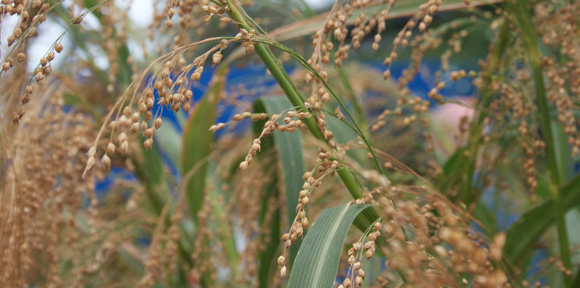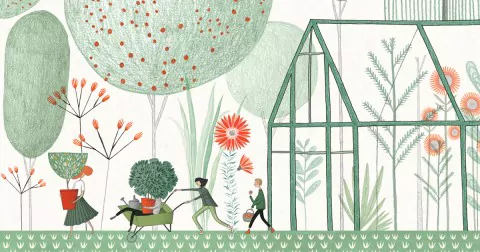Category: Plants & People
-

Plants From Mayan “Pompeii” Reveal Disappeared Daily Life
his unique preservation setting provides visibility to what is often archaeologically invisible: namely, the difference between living and curated plants. Using GIS, it is possible to present visually a range of plantscapes in which the inhabitants lived, thus providing a unique glimpse into their work, storage and eating places, and their daily plant-tending chores. Beans, for example, are infrequently encountered in archaeological sites, especially in warm and humid environments. Cerén, however, contained abundant quantities of beans distributed throughout many structures and located both near and far from structure walls. The exact location of each of these specific plants at Cerén has provided direct evidence for analogous practices and tasks of plant-use and provisioning at other Late Classic Maya settlements. (Click on title for full story.)
-

Learning About Food Security From Neolithic Farmers
Millets have an unparalleled genetic diversity both because of their long history of cultivation, and because they’ve been grown in so many regions of the world, including very harsh ones. This means they’ve retained the wild traits that give them resilience to changes in growing conditions. They don’t need much water, they grow quickly, and they have a great nutritional balance. (Click on title for full story.)
-

Gardening Benefits Children In A Great Many Ways
Whether in your own little plot or as part of a larger space, gardening can provide children with a variety of benefits few other activities can. (Click on title for full story.)
-

That Pristine Jungle? Humans Have Been Altering It For 45,000 Years
The first review of the global impact of humans on tropical forests in the ancient past shows that humans have been altering these environments for at least 45,000 years. This counters the view that tropical forests were pristine natural environments prior to modern agriculture and industrialization. The study found that humans have in fact been having a dramatic impact on such forest ecologies for tens of thousands of years, through techniques ranging from controlled burning of sections of forest to plant and animal management to clear-cutting. (Click on title for full story.)
-

Remnant Prairies Survive In Forgotten Cemetaries
Illinois once had 22 million acres of tall-grass prairie. Today, only 2,300 acres remain. But of those acres, many of the finest examples of untouched, pre-settlement prairie sit on 29 tenuous pioneer cemetery plots, fragile islands of untamed land in what is now an ocean of agricultural conformity. Together these cemeteries, often left undisturbed because they are burial grounds, make up about 50 acres. It is as if the pioneers, in their deaths, left us a few seeds of life. (Click on title for full story.)
-

Urban Forests Save Energy By Taming Urban Winds
To study the effect of trees on wind, the researchers built an incredibly detailed model of a Vancouver neighborhood by scanning every building, street, and tree using LIDAR technology and combining that with wind data that’s accurate down to a 1.6 feet from a University of British Columbia research tower. Using the data and an algorithm they developed to model wind speed, the scientists were able to create a virtual model using supercomputers in Switzerland. They found that when running the model without any trees, the wind speed increased by a factor of two. (Click on title for full story.)
-
Cash Payments To Preserve Trees In Uganda Pay Dividends
A two-year project that paid a total of US$20,000 to 180 people in 60 Ugandan villages not to cut down trees on their land was worth the money, researchers say. By delaying carbon dioxide emissions, the project’s benefits to society were more than double its costs. (click on title for full story.)
-
All Of Our Potatoes Started Here 11,000 Years Ago
“Our study has found the earliest evidence of potato use in North America, It’s about the rediscovery of wild potatoes native to North America and [the plant] being a very important food resource for the past 10,000 years up until today.” (Click on title for full story.)
-
Some Plants Grow So Slowly They Require More Than One Botanist’s Lifetime For Proper Study
In 1974, a graduate student named David Inouye marked a small plant in an alpine meadow in Colorado with an aluminum tag. Forty-three years later, Inouye, now a professor emeritus at the University of Maryland, is still waiting for it to flower. “I’m hoping I live long enough,” he says. (Click on title for full story.)
-
American Chestnuts Will Return… Eventually
Very few people understand the magnitude of the breeding challenge embarked upon by The American Chestnut Foundation when it began in 1983. Just to complete the B3F2 generation of breeding and selection — the final generation as originally envisioned — has meant that 73,000 trees must be created by hand pollination and grown and tested in plantations for a minimum of three years. (Click on title for full story.)
